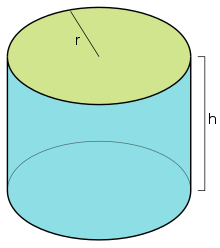So we have been looking at finding the surface area of prisms. Often the diagram will give us all of the information we need to solve these problems straight away, but sometimes we need to find some for ourselves first. An example of this can be seen with the following shape:
If we are asked to find the total surface area of this shape, we can easily do this as it is made up of basic triangles and rectangles. If we look carefully though, we will see that the top rectangular face doesn't have a length for the edge touching the triangle.
Without this length, we cannot find the area of this face, and so we cannot find the total surface area of the prism. Fortunately we do have a way to find this side length, and that is using Pythagoras' Theorem on right angled triangles. This should have been covered in grade 8 or 9, but if you need a refresher the following link is handy:
Now looking at this prism, we will just look at the triangular face for now:
Using Pythagoras' Theorem we can find the length of this unknown side quite easily:
Now that we know the unknown side length, our prism now looks like this:
We now have all of the information we need to find the total surface area of this whole prism.
If you work this out, you should get an answer of 75 square centimeters.
We may also have a prism that looks like this:
If we look carefully at this one, we can see that we don't actually know the height of the triangular face, so we cannot find the area of this face. We will again use Pythagoras' Theorem to find this height. Again, I will just focus on the triangular face:
Now Pythagoras' Theorem will only work with right angled triangles, and this triangle above is clearly not right angled. We can, however cut this triangle in half and turn it into a right angled triangle. It would then look like so:
You will notice that the base length of the triangle is now 2cm, since we have cut it in half. We can now use Pythagoras' Theorem to find our unknown side like so:
We now know that our height of our triangular face is 3.46cm. Our original prism now looks like so:
We can now easily find the total surface area of this prism. If you work it out you should get an answer of 73.84 square centimeters.
I have uploaded a worksheet for this topic into the "Work Sheets" tab. You should be able to complete the first question. There are 6 different prisms for you to find the surface area of.
As always, if you have any questions on this topic feel free to comment on this post, or email or chat to me in person.

















